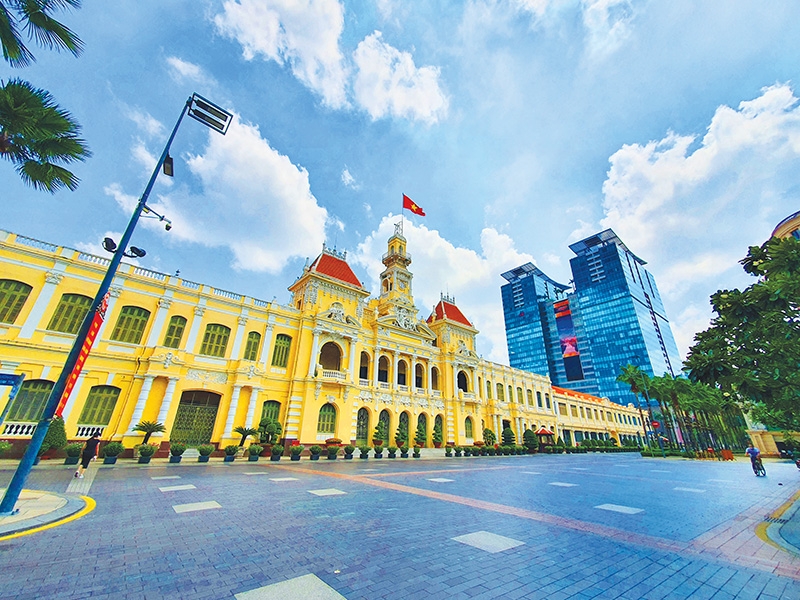Assessing use of Directive 16 and the wider implications for Ho Chi Minh City
 |
| Matthew Lourey - Managing partner Acclime Vietnam |
It has been the clear objective during this most recent outbreak that the Ho Chi Minh City authorities have sought to protect the manufacturing and export base of the city, and to ensure that the supply lines continue. The authorities have also sought to ensure the supply of food and necessities for the public at large.
It is understandable that the manufacturing and export industries were being protected – it is these sectors that provided the foundation and stability for Vietnam during 2020 and early 2021 (Vietnam’s exports were up 28.4 per cent on-year for the first half of 2021), and have kept economic growth moving ahead. During 2020, Vietnam was one of the very few economies that had economic growth, and the cost and economic impact on Vietnam was far more limited during this time.
Ho Chi Minh City is now, however, experiencing its most difficult time with restrictions over the past six weeks already. The impact of these existing restrictions on the community is significant, and there are many people suffering in the city. The government’s release of Resolution No.68/NQ-CP 2001 on July 1 providing support for impacted employees and businesses acknowledges the issues, but will not compensate for the impacts being faced domestically.
From a business perspective, it is clear that further restrictions are needed to prevent the spread of COVID-19 and to get on top of the issue in Ho Chi Minh City, and the acceptance of the challenges to businesses, as a result, is necessary. This does not make life easy for businesses – foreign and domestic – that have to determine if they can continue to operate within the restrictions and to protect their employees and long-term business viability.
Manufacturing is still permitted under Directive 16, but with the restrictions in movement between provinces (both people and supply chain), this is going to cause issues in production. From an economic perspective, this likely has the biggest long-term impact on Vietnam.
 |
| The empty streets of Ho Chi Minh City an hour after the lockdown descended. Photo: Le Toan |
Retail and food and beverage outlets will reopen after the pandemic has been brought under control, but manufacturing is different. If manufacturers, many of which have experienced significant growth in orders in 2021 following Vietnam’s outstanding performance in recent years, cannot deliver the orders that they have accepted, customers will go elsewhere. The reputation, based upon risk, of the manufacturers and Vietnam as a reliable destination for orders will be in jeopardy.
More than 70 per cent of all exports from Vietnam are from foreign-invested enterprises (FIEs), which create the vast majority of the country’s trade surplus (in fact, during the first half of 2021, locally-invested enterprises had a trade deficit of $15 billion, with FIEs having a trade surplus of $13.54 billion). FIEs are critical for the ongoing growth and development of Vietnam.
Therefore, the delicate balance of reducing the movement of people in Ho Chi Minh City to stop transmission, and allowing production to continue, is difficult.
Manufacturing leaders have been extremely willing to protect the manufacturing process in Ho Chi Minh City and surrounding provinces by introducing 5K principles, mass testing and vaccinations, and working with centres for disease control and prevention and local authorities to ensure that the process can continue in a safe manner.
There will be long-term benefits here, with workplaces being fundamentally different in the future, and we can look back later at what this means to occupational health and safety, but in the short term it is about day-to-day protection and production. Supply chains are at risk and facilitating deliveries to and from production facilities presents risks, introducing outside people into a workplace. This has to be managed carefully, to ensure that outside influences that are travelling are not introducing COVID-19, hence the requirement for testing for anyone crossing provincial borders.
This requirement presents a major concern, as there are insufficient testing stations for individuals to get negative certificates to enable them to cross borders to go to factories or to deliver goods. This will be solved, and appears necessary, but is a challenge and will remain one for some time.
The business community is supportive of further mass testing, provided it is undertaken safely, and if vaccine supplies can be ensured and rolled out to the community at large – particularly to those at most risk first – then Ho Chi Minh City can get on top of this current outbreak.
There will be longer-term economic impacts to Ho Chi Minh City and Vietnam as a whole as a result of the current outbreak. There will be many businesses closed, jobs lost, and lives lost. When we recover it will require some rebuilding, and this will need further government support. However, Vietnam will remain an attractive destination for overseas investment, and the current focus on protecting manufacturing and production will provide the underlying base for Ho Chi Minh City and Southern Vietnam to bounce back after the current outbreak is contained.
What the stars mean:
★ Poor ★ ★ Promising ★★★ Good ★★★★ Very good ★★★★★ Exceptional
Themes: Together We Win
- Greater Mekong Subregion executives to discuss sustainable tourism
- TCPVN donates 1,200 medicine bags to COVID-19 patients in southwest
- AB InBev supports orphans with scholarships amid COVID-19
- Evaluating the reach of support in turbulent times
- Gamuda Land grants “Back to School” scholarships to support disadvantaged students
Related Contents
Latest News
More News
- Agribank frames bank credit as catalyst for green growth (December 15, 2025 | 17:59)
- Legal framework completed for national digital transformation (December 13, 2025 | 21:55)
- SOAR initiative launched at TECHFEST Vietnam 2025 (December 13, 2025 | 10:00)
- Promoting digital assets initiative in Vietnam (December 13, 2025 | 09:30)
- Legislation gives government flexibility for loan guarantees (December 11, 2025 | 18:04)
- Vietnam masters core technologies of automobile value chain (December 11, 2025 | 17:46)
- Japanese investors pursue M&A strategies with long-term vision in Vietnam (December 11, 2025 | 12:14)
- Raising product quality to secure Vietnam’s position in US market (December 11, 2025 | 12:00)
- Industrial sector posts robust gains as year-end demand rises (December 09, 2025 | 13:38)
- ASEAN economies move up the global chip value chain (December 09, 2025 | 13:32)

 Tag:
Tag:





















 Mobile Version
Mobile Version